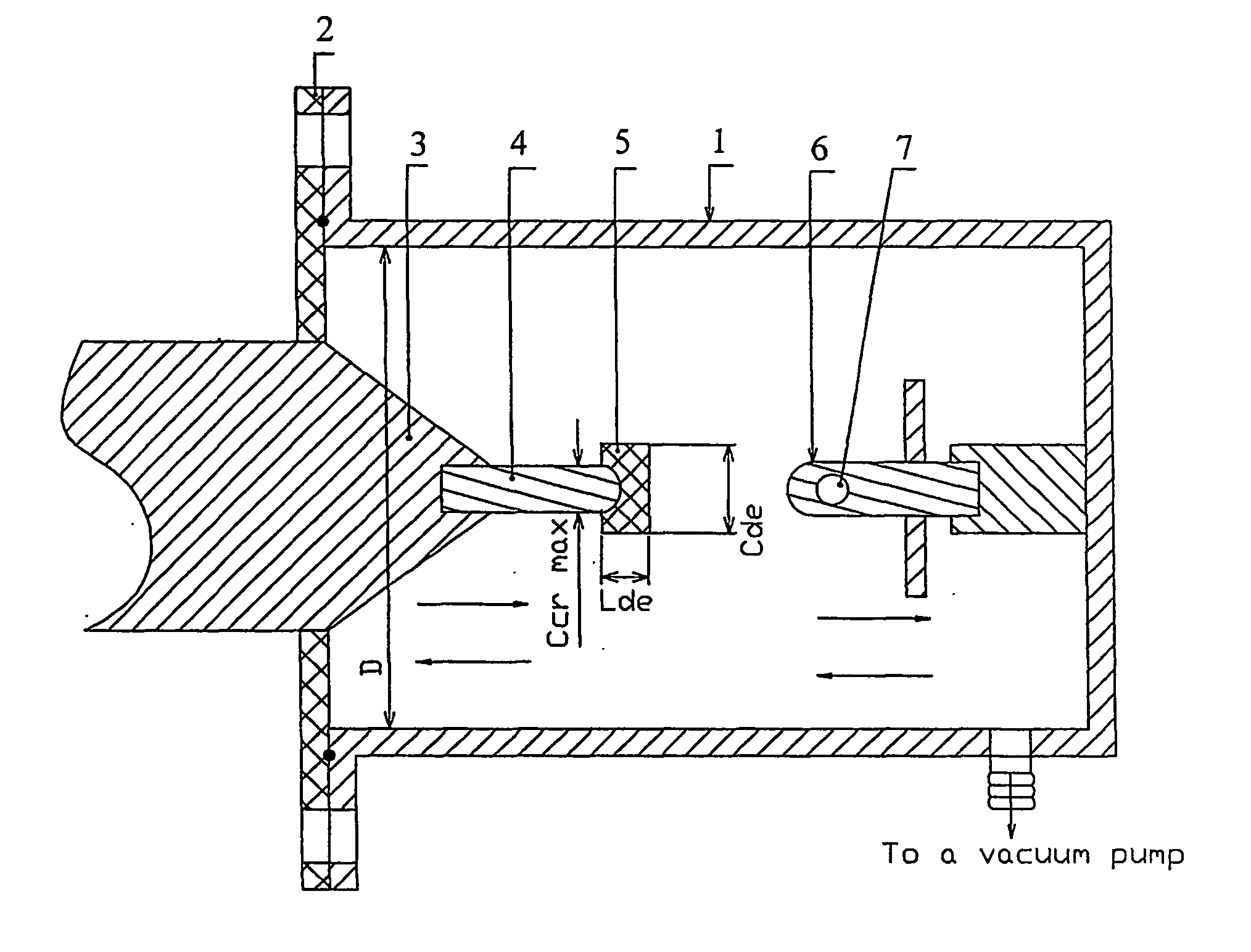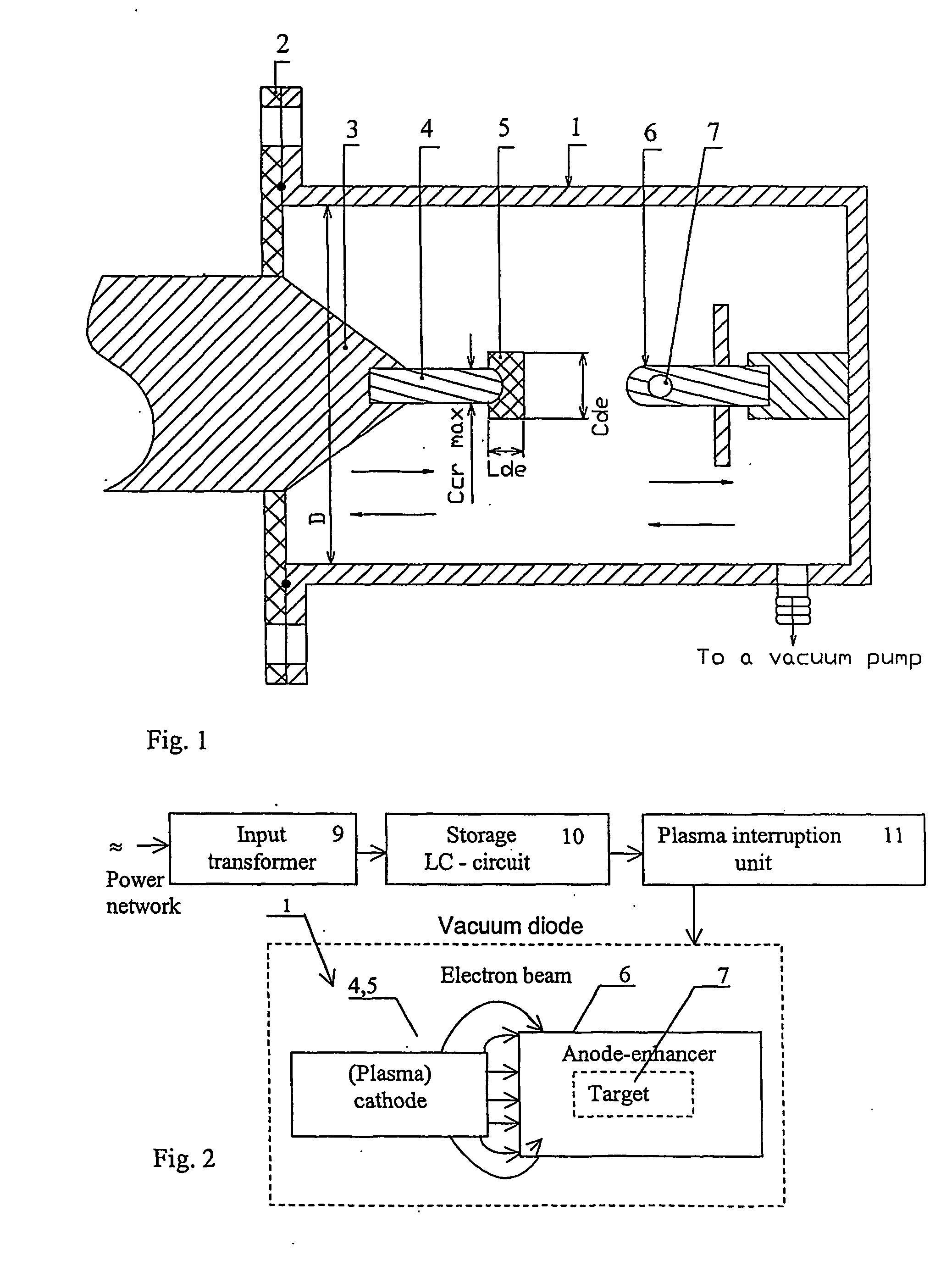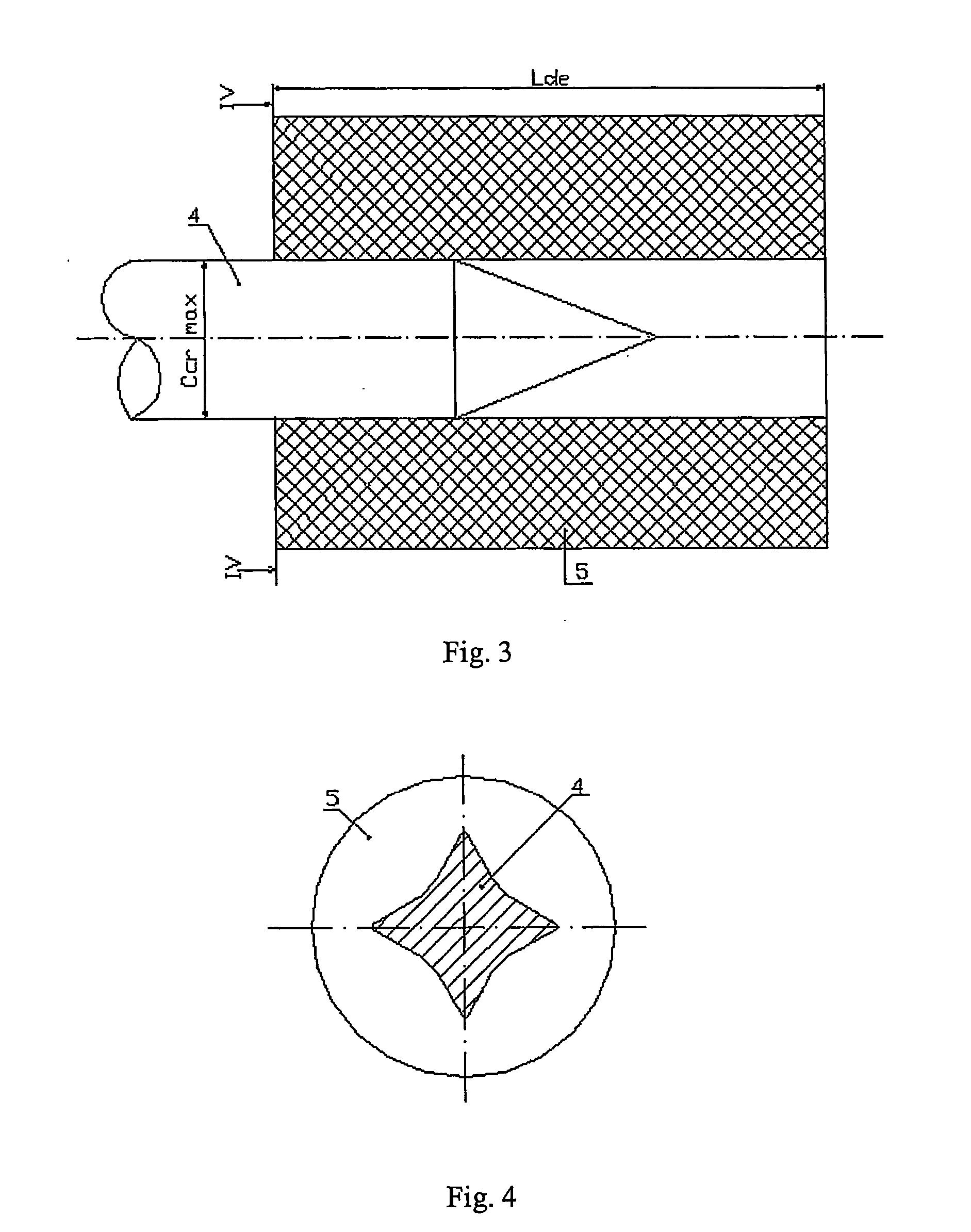Method and device for compressing a substance by impact and plasma cathode thereto
a plasma cathode and impact technology, which is applied in the direction of discharge tube main electrodes, nuclear reactors, greenhouse gas reduction, etc., can solve the problems of increasing the cost of plasma cathode operation, and exceeding 5%, so as to achieve the effect of stabilizing the operation of plasma cathod
- Summary
- Abstract
- Description
- Claims
- Application Information
AI Technical Summary
Benefits of technology
Problems solved by technology
Method used
Image
Examples
Embodiment Construction
[0140] The device according to the invention (FIG. 1) is made on the basis of a RVD. The essential parts thereof are: [0141] a strong gas-tight housing 1 which is made partly from a current-conducting material (for example, copper or stainless steel) shaped axisymmetrically to confine a vacuum chamber closed, in the operation condition, with a dielectric end cover 2 and connected when required via at least one pipe (not shown) to a vacuum pump; [0142] a non-consumable axisymmetric current-conducting rod 3 preferably circular in the cross section and preferably tapered in the longitudinal section, rigidly and tightly fixed in the cover 2 and intended for connection of RVD to a pulsed high-voltage power source described below; [0143] a replaceable (as worn out) axisymmetric plasma cathode comprising: [0144] a current-conducting rod 4 having its tail fixed in the rod 3 and [0145] a dielectric end element 5 rigidly connected with the rod 4, said element 5 having the area of the working ...
PUM
 Login to View More
Login to View More Abstract
Description
Claims
Application Information
 Login to View More
Login to View More - R&D
- Intellectual Property
- Life Sciences
- Materials
- Tech Scout
- Unparalleled Data Quality
- Higher Quality Content
- 60% Fewer Hallucinations
Browse by: Latest US Patents, China's latest patents, Technical Efficacy Thesaurus, Application Domain, Technology Topic, Popular Technical Reports.
© 2025 PatSnap. All rights reserved.Legal|Privacy policy|Modern Slavery Act Transparency Statement|Sitemap|About US| Contact US: help@patsnap.com



